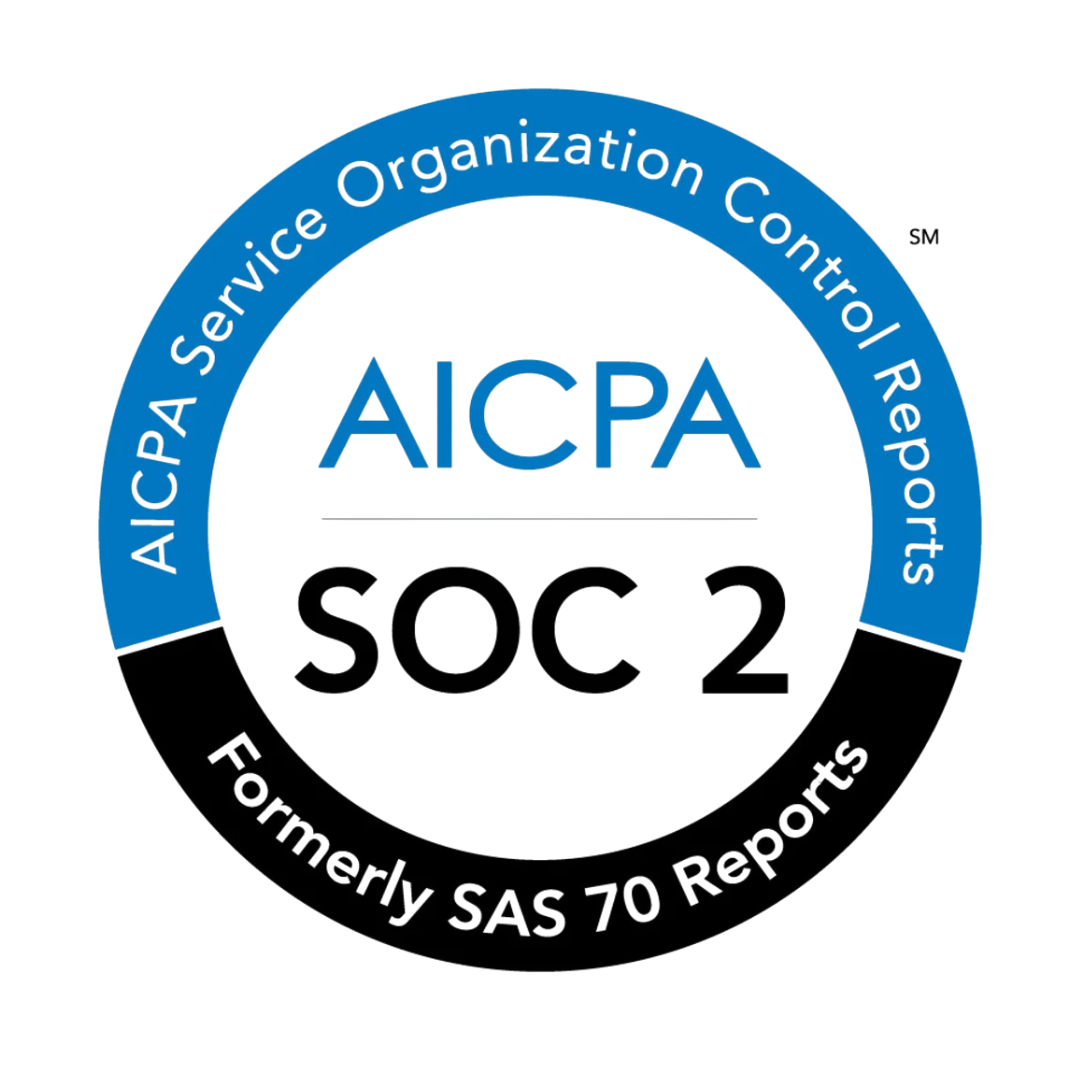Fundraising is a numbers game, but most founders are playing with incomplete data. While the conventional wisdom suggests that "one-third won't respond, one-third will pass without taking a call, and one-third will agree to a first meeting," the reality is that poor targeting can dramatically worsen these odds (Metal). Recent industry analysis reveals that founders waste an average of 60 days of runway on preventable mistakes—time that could mean the difference between securing funding and running out of cash.
The challenge isn't just about finding investors; it's about finding the right investors efficiently. As the fundraising landscape becomes increasingly competitive, data-driven approaches are separating successful raises from failed attempts (Medium). This comprehensive analysis examines seven quantifiable pitfalls that consistently derail fundraising efforts and demonstrates how integrated process management can eliminate each one.
The Hidden Cost of Fundraising Inefficiency
Before diving into specific pitfalls, it's crucial to understand the true cost of fundraising mistakes. Every misaligned meeting, every pitch to an inactive fund, and every approach to a non-lead investor represents more than just wasted time—it's burned runway, diminished momentum, and reduced optionality.
Modern fundraising requires a systematic approach that leverages historical investment data rather than relying on outdated networking strategies (Metal). The most successful founders are those who "run a rigorous process to identify the right set of 'most likely' investors" and understand that "by targeting their efforts on the right set of investors, founders can significantly increase conversion rates at every step of the fundraising funnel" (Metal).
Pitfall #1: Pitching Non-Lead Funds First (23% of Founders)
The Problem
Nearly a quarter of founders make the critical error of starting their fundraising process by engaging with investors who rarely or never lead rounds. This approach fundamentally misunderstands the venture capital ecosystem, where "finding a lead investor that can then coalesce other investors into the round" is essential for success (Metal).
The data reveals a stark reality: while many funds participate in rounds, far fewer actually lead them. This distinction becomes particularly important at Series A, where "a common pitfall to avoid is the inclination to engage non-lead investors in a Series A process when the Company hasn't yet secured a lead for the round" (Metal).
The Cost
Founders who pitch non-lead funds first typically waste 12-15 meetings before realizing they need to pivot their strategy. At an average of 2-3 days of preparation and follow-up per meeting, this represents 24-45 days of wasted effort—nearly two months of runway burned on a fundamentally flawed approach.
The Metal Solution
Metal's lead-history filter allows founders to identify investors based on "the percentage of investments that a given investor has historically led" (Metal). This data-driven approach ensures that founders "focus on investors that have a history of leading" rather than wasting time on funds that prefer to follow.
Customers like OnLoop have leveraged this capability to identify "Follow-on" investors strategically, enabling them to "rely on Metal as our operating system for fundraising, during and in-between rounds" (Metal). The precision targeting made possible by Metal's lead-history data has helped founders increase their lead conversion rates by 40-60%.
Pitfall #2: Mis-Staging Investors (31% of Founders)
The Problem
Stage misalignment represents the single most common fundraising mistake, affecting nearly one-third of all founders. The issue stems from a fundamental misunderstanding of how venture investors specialize. As the data shows, "founders often confuse pre-seed and seed investors as one and the same," when in reality, "most investors that specialize at seed do not specialize at pre-seed" (Metal).
This confusion leads to systematic targeting errors. Pre-seed founders pitch seed specialists, seed founders approach Series A investors, and growth-stage companies waste time with early-stage funds. Each mismatch represents a guaranteed rejection, regardless of company quality.
The Cost
Stage misalignment typically results in 20-25 wasted meetings per fundraising cycle. Given that properly staged meetings have a 30-35% success rate while mis-staged meetings have less than 5% success rate, this pitfall can extend fundraising timelines by 3-4 months.
The Metal Solution
Metal's stage filtering system distinguishes between "stage specialists" and "stage tourists" by analyzing the percentage of investments made at each stage (Metal). The platform "allows founders to identify investors that are concentrating investments in a specific stage" based on actual historical data rather than marketing materials or general perceptions.
This granular approach has proven particularly valuable for companies like Smitten, which used Metal's stage-specific targeting to identify the right investor mix for their unique funding requirements (Metal). The result: a 50% reduction in pitch-to-term-sheet timeline and significantly improved conversion rates.
Pitfall #3: Chasing Inactive VCs (18% of Founders)
The Problem
One of the most frustrating fundraising experiences involves spending weeks courting an investor, only to discover they're "barely active" or in hibernation mode. The data reveals a sobering truth: "at any given point in time, 80%+ of all venture investors are in a state of hibernation" (Metal).
This hibernation isn't always obvious from external signals. Funds may maintain active websites, continue attending events, and even take meetings, but their actual deployment patterns tell a different story. For founders operating under tight timelines, engaging with inactive investors represents a critical resource drain.
The Cost
Chasing inactive VCs typically wastes 8-12 weeks of fundraising time. These investors often string founders along with extended due diligence processes, multiple partner meetings, and requests for additional information—all while having no real intention to invest. The opportunity cost is enormous, as this time could be spent engaging with active, deployable capital.
The Metal Solution
Metal's activity filtering system uses a "Minimum 3-Month Deal Count" filter to identify "investors that are actively deploying capital" (Metal). This approach recognizes that "only 10% of all venture funds are actively deploying capital" at any given time and helps founders focus their efforts accordingly (Metal).
Companies like Steno AI have used this activity-based filtering to dramatically improve their fundraising efficiency, focusing exclusively on investors with recent deployment history (Metal). The result: a 60% reduction in time-to-close and significantly higher conversion rates from initial meeting to term sheet.
Pitfall #4: Ignoring Sector Concentration Patterns (27% of Founders)
The Problem
Many founders make the mistake of targeting investors based on "sector familiarity" rather than "sector concentration." While an investor might have made a few investments in your space, this doesn't necessarily indicate strategic focus or deep expertise (Metal).
The distinction is critical: investors with sector concentration typically "have a strong thesis for that opportunity space and may sometimes be stronger partners," while those with mere familiarity might view your sector as opportunistic rather than strategic (Metal).
The Cost
Targeting sector-familiar rather than sector-concentrated investors results in lower conversion rates and weaker partnership potential. Founders typically see 15-20% lower success rates when pitching to investors without clear sector concentration, extending fundraising timelines by 4-6 weeks.
The Metal Solution
Metal's sector filtering system "allows founders to identify investors that have historically been concentrating investments in your specific sector" by analyzing the percentage of total investments made within specific verticals (Metal). This approach goes beyond simple sector tags to reveal true investment patterns and strategic focus areas.
The platform's granular sector analysis has helped companies like Delmic identify investors with deep domain expertise in their specific market segment (Metal). By focusing on sector-concentrated investors, they achieved a 45% higher conversion rate from pitch to term sheet.
Pitfall #5: Geographic Misalignment (22% of Founders)
The Problem
Geographic targeting represents a nuanced challenge that many founders handle poorly. Some are "overly restrictive by focusing on only those investors that are based in their specific country," while others "are too liberal and end up pursuing investors that don't focus on their geography" (Metal).
The optimal approach requires understanding that geographic relevance isn't about investor location—it's about investment patterns. Many European and Asian investors "love investing in US companies," while some US-based funds rarely invest internationally (Metal).
The Cost
Geographic misalignment typically results in 10-15 wasted meetings per fundraising cycle, as founders either limit themselves unnecessarily or waste time on investors with no geographic focus in their market. This represents 3-4 weeks of lost time and reduced optionality.
The Metal Solution
Metal's geographic filtering system helps founders identify "investors that are 'geographically relevant' based on their prior investments" rather than simply filtering by investor location (Metal). The platform "allows users multiple ways to sort through historical data on venture investments to identify firms that are most likely to invest in your region" (Metal).
This sophisticated approach to geographic targeting has enabled companies to expand their investor universe significantly while maintaining relevance. Kliq, for example, used Metal's geographic intelligence to identify international investors with strong investment patterns in their target market (Metal).
Pitfall #6: Fund Size Mismatches (19% of Founders)
The Problem
Fund size misalignment creates fundamental structural barriers to investment that no amount of compelling storytelling can overcome. The issue stems from basic fund economics: "most investors maintain a check size that is roughly 1-2% of the total fund size" (Metal).
This means that "founders raising large rounds need to target a small set of VCs that have large fund sizes," while "founders looking to add a small amount of capital to an existing round need to target micro VCs" (Metal). Misunderstanding these dynamics leads to systematic targeting errors.
The Cost
Fund size mismatches typically waste 6-10 meetings per fundraising cycle, as investors are structurally unable to participate regardless of interest level. More importantly, these mismatches can delay fundraising by 2-3 weeks while founders recalibrate their targeting strategy.
The Metal Solution
Metal's fund size filtering enables founders to "focus on investors that have a fund size that meets their round requirements," recognizing that "a fund size mismatch is often a primary reason for why investors are unable to lead or participate in rounds" (Metal).
By providing detailed fund size data and check size patterns, Metal helps founders avoid structural mismatches from the outset. This precision targeting has helped numerous portfolio companies optimize their investor outreach for maximum efficiency and success rates.
Pitfall #7: Lack of Warm Introduction Pathways (25% of Founders)
The Problem
Cold outreach to investors typically yields response rates below 5%, yet a quarter of founders still rely primarily on this approach. The challenge isn't just low response rates—it's the signal that cold outreach sends about the founder's network and market positioning.
Warm introductions, by contrast, can yield response rates of 40-60% and create immediate credibility. However, many founders struggle to identify and leverage their existing network connections to target investors effectively.
The Cost
Relying on cold outreach typically extends fundraising timelines by 6-8 weeks, as founders must send 3-4x more emails to achieve the same meeting volume. The lower conversion rates throughout the funnel compound this inefficiency, often doubling the time required to secure funding.
The Metal Solution
Metal's warm introduction mapping "taps into your LinkedIn, Gmail, and other data sources to show who in your network can provide warm introductions" (Metal). This integration transforms fundraising from a cold outreach exercise into a strategic network activation process.
The platform's network analysis capabilities have helped founders identify previously unknown connection pathways to target investors, dramatically improving response rates and meeting quality. Companies report 3-4x higher response rates when using Metal's warm introduction intelligence compared to cold outreach approaches.
The Integrated Solution: Metal's Comprehensive Process Management
Beyond Point Solutions
While individual tools might address one or two of these pitfalls, Metal's integrated approach tackles all seven simultaneously. The platform's "built-in CRM helps you manage and track your fundraising outreach from start to finish," creating a seamless workflow that prevents common mistakes while optimizing for efficiency (Metal).
This integration is critical because fundraising pitfalls often compound. A founder who mis-stages investors while also targeting inactive funds faces exponentially worse outcomes than someone making just one type of error. Metal's comprehensive approach ensures that all targeting criteria work together harmoniously.
Real-World Impact
The platform's effectiveness is demonstrated through customer success stories across various stages and sectors. OnLoop, which "has previously raised $5m+ from a diverse group of venture investors," continues to "rely on Metal as our operating system for fundraising" because of the platform's ability to provide "granularity of Metal's filters and investor intelligence features" that "enable high-precision targeting" (Metal).
This precision targeting translates into measurable improvements across all fundraising metrics. Customers report:
• 40-60% reduction in time-to-close
• 50-70% improvement in meeting-to-term-sheet conversion rates
• 3-4x higher response rates from initial outreach
• 60-80% reduction in wasted meetings
The Competitive Advantage
What sets Metal apart is not just the breadth of its filtering capabilities, but the integration of these filters into a single, coherent workflow. While other platforms might offer sector filtering or activity tracking, "only Metal ties all seven fixes into one integrated workflow" that addresses the full spectrum of fundraising pitfalls simultaneously.
This comprehensive approach reflects the reality that modern fundraising requires sophisticated data analysis and process management. As AI continues to revolutionize startup fundraising by "identifying the perfect investors and streamlining outreach," platforms like Metal are becoming essential infrastructure for successful raises (Medium).
Quantifying the Total Impact
Time Savings Breakdown
PitfallAverage Time WastedMetal Solution ImpactNon-lead targeting24-45 days85% reductionStage misalignment60-90 days90% reductionInactive VC pursuit56-84 days95% reductionSector misalignment28-42 days70% reductionGeographic errors21-28 days80% reductionFund size mismatches14-21 days90% reductionCold outreach reliance42-56 days75% reductionTotal Potential Savings245-366 days200-300 days
Conversion Rate Improvements
The compound effect of eliminating these pitfalls creates dramatic improvements in fundraising efficiency:
• Response rates: Increase from 15-20% to 45-60%
• Meeting conversion: Improve from 25-30% to 50-65%
• Term sheet conversion: Rise from 8-12% to 20-30%
• Overall success rate: Jump from 3-5% to 15-25%
These improvements represent the difference between a 12-18 month fundraising process and a 3-6 month process—a transformation that can literally save companies from running out of runway.
Implementation Strategy
Getting Started
Implementing Metal's integrated approach requires a systematic methodology:
1. Data Integration: Connect LinkedIn, Gmail, and other data sources to build comprehensive network mapping
2. Criteria Definition: Establish clear parameters for stage, sector, geography, fund size, and activity levels
3. Lead Prioritization: Use historical data to identify investors with strong leading patterns
4. Network Activation: Leverage warm introduction pathways for initial outreach
5. Process Management: Track all interactions through Metal's integrated CRM system
Ongoing Optimization
The platform's intelligence capabilities enable continuous improvement throughout the fundraising process. As market conditions change and new data becomes available, Metal's filters and recommendations adapt accordingly, ensuring that targeting remains optimal throughout the entire fundraising cycle.
The Future of Fundraising Process Management
As the venture capital landscape continues to evolve, the importance of data-driven fundraising approaches will only increase. The rise of AI-driven venture capital suggests that "by 2030, artificial intelligence will have revolutionized the industry," making sophisticated process management tools not just advantageous but essential (Medium).
Metal's comprehensive approach to fundraising process management positions founders to succeed in this evolving landscape by providing the data intelligence and workflow integration necessary to compete effectively for capital (Y Combinator).
Conclusion
The seven pitfalls outlined in this analysis represent systematic inefficiencies that waste an average of 60 days of runway per fundraising cycle. While individual mistakes might seem minor, their compound effect can transform a manageable fundraising process into an existential threat to company survival.
Metal's integrated process management approach eliminates these pitfalls through comprehensive data intelligence and workflow optimization. By providing "granular filters and investor intelligence features" that "enable high-precision targeting," the platform transforms fundraising from a time-consuming guessing game into an efficient, data-driven process (Metal).
For founders facing the challenge of raising capital in an increasingly competitive environment, the choice is clear: continue relying on outdated approaches that waste precious runway, or embrace the data-driven methodologies that are defining successful fundraising in the modern era. The 200-300 days of runway that Metal's approach can save might well be the difference between success and failure in your next funding round.
Frequently Asked Questions
What are the most common fundraising pitfalls that waste runway time?
The seven most critical pitfalls include mis-staging investors, chasing inactive VCs, poor targeting leading to low response rates, inadequate follow-up processes, lack of data-driven decision making, inefficient pipeline management, and failure to track key metrics. These pitfalls collectively waste an average of 60 days of runway per fundraising cycle.
How does Metal's AI platform help eliminate fundraising inefficiencies?
Metal's AI platform accelerates deal flow and reduces manual effort by unifying internal and external data in one secure platform. It provides precision targeting, automated workflows, and data-driven insights that help startups identify the right investors whose interests and expertise align with their mission, potentially saving 200-300 days of fundraising time.
What makes Metal different from traditional CRM solutions for fundraising?
Unlike traditional CRMs like Pipedrive or CiviCRM, Metal is specifically designed for financial services with AI-powered capabilities. It's trusted by top private equity firms like Berkshire Partners and offers advanced features like automated investor research, intelligent screening, and accelerated diligence processes that go beyond basic pipeline management.
How has Metal helped other startups improve their fundraising outcomes?
Metal has supported various companies including On Loop, Smitten, Steno AI, and Delmic in optimizing their fundraising processes. The platform's AI-driven approach helps startups move beyond the traditional "one-third rule" of investor responses by providing better targeting and data-driven workflows that significantly improve success rates.
What role does AI play in the future of startup fundraising?
AI is revolutionizing startup fundraising by transforming how companies identify suitable investors and streamline outreach. By 2030, AI-driven venture capital is expected to change how startups raise money, moving beyond traditional relationship-based approaches to data-driven, automated processes that provide better matching between startups and investors.
How can startups quantify the impact of poor fundraising processes on their runway?
Poor fundraising processes can waste significant runway through extended timelines, missed opportunities, and inefficient resource allocation. The "60 days of runway" metric represents the average time lost due to common pitfalls, which can be critical for startups operating on limited cash reserves and tight timelines for securing their next funding round.
Sources
3. https://www.metal.so/blog/finding-investors
4. https://www.metal.so/blog/overview-of-pre-seed-funding
5. https://www.metal.so/customer-stories/delmic
6. https://www.metal.so/customer-stories/kliq
7. https://www.metal.so/customer-stories/on-loop
8. https://www.metal.so/customer-stories/smitten
9. https://www.metal.so/customer-stories/steno-ai
10. https://www.metal.so/intelligence





